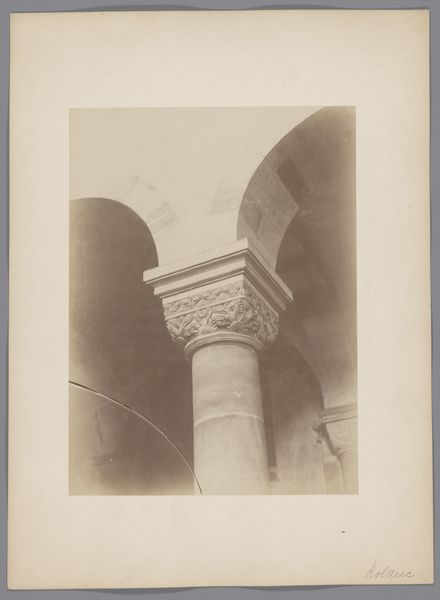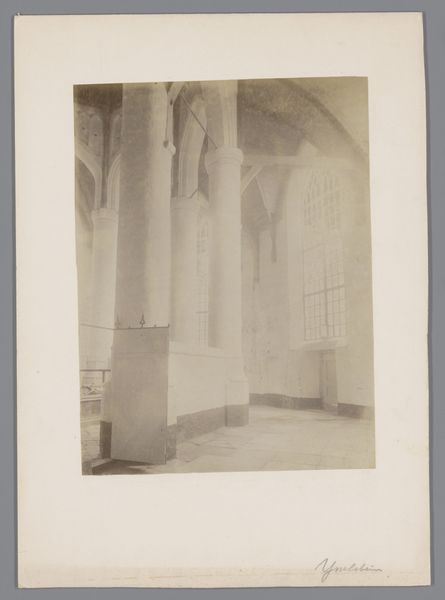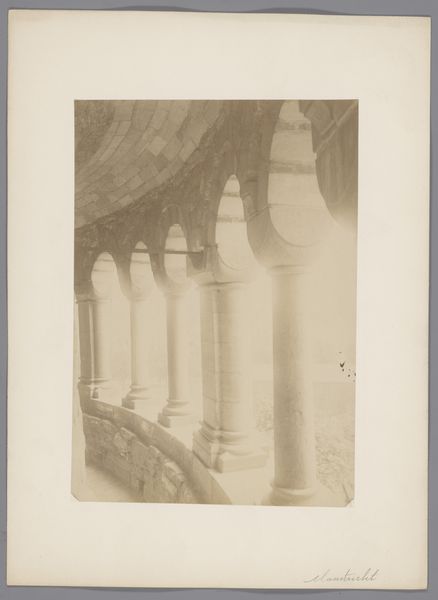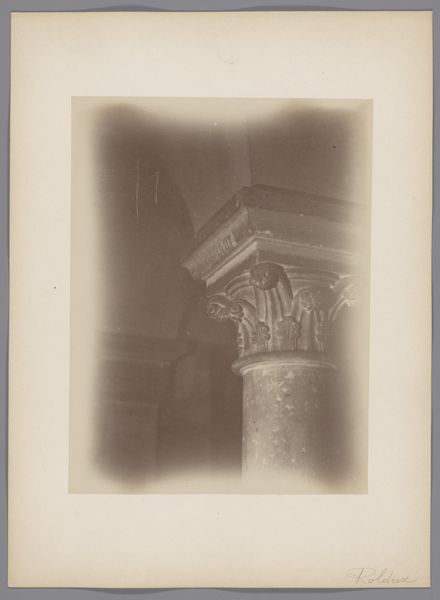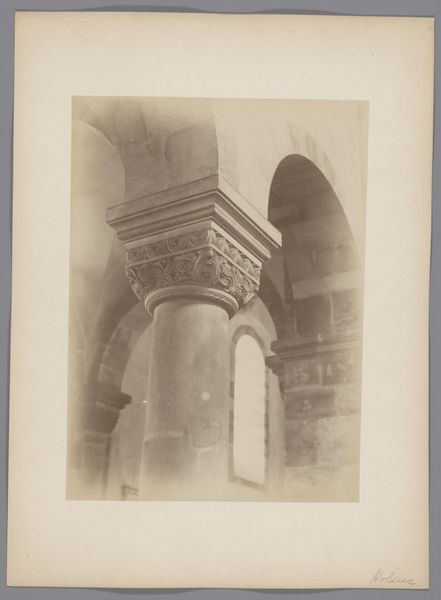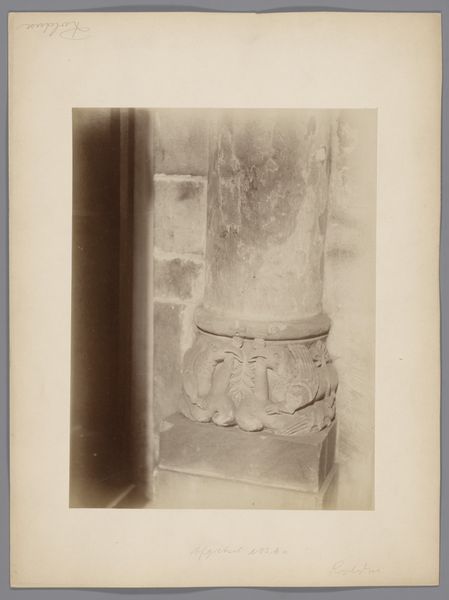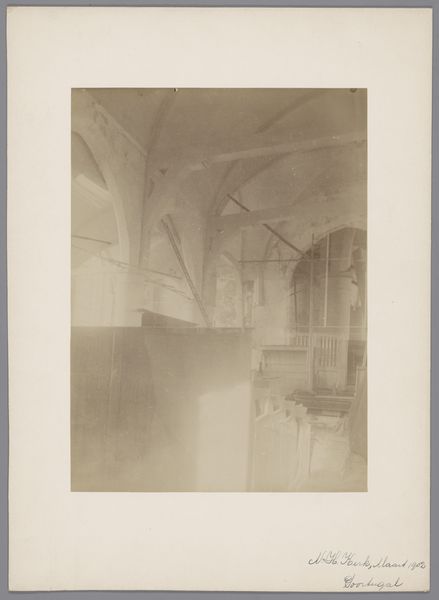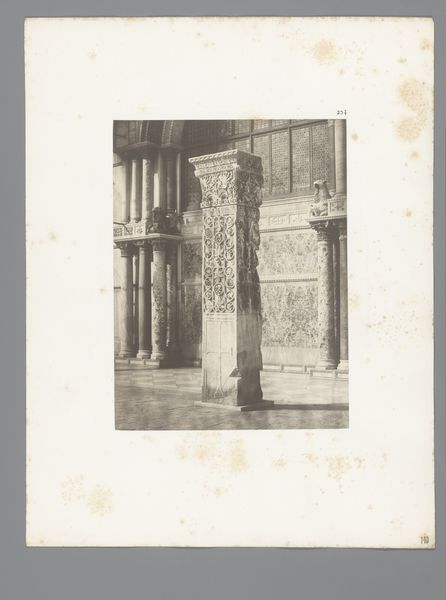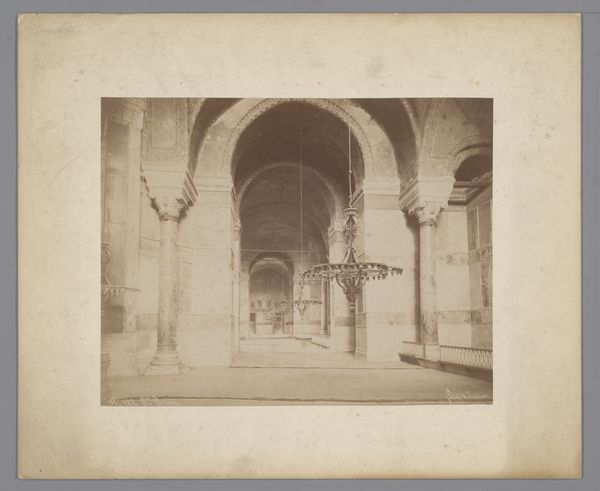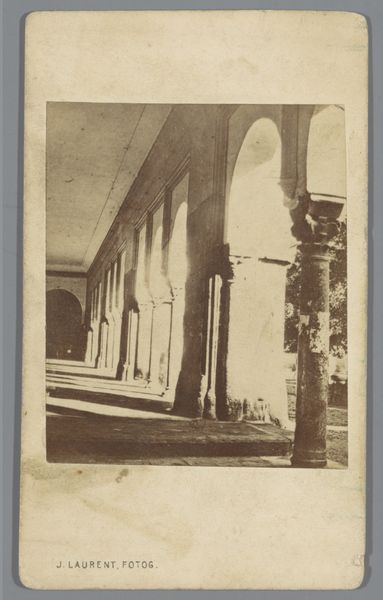
Dimensions: height 229 mm, width 170 mm
Copyright: Rijks Museum: Open Domain
Curator: This photographic print captures a wall column capital in the Abdijkerk at Rolduc, dating back to 1890. The anonymous photographer provides us with an intriguing glimpse into the church's architectural details. Editor: My first impression is that this print feels intensely…spiritual. The light seems to emanate from the column itself, making the architecture appear both grounded and ethereal. There's a powerful sense of quietude and timelessness about it. Curator: The late 19th century witnessed significant monument preservation efforts. This photograph is likely part of a larger project to document and understand historical architecture and the rise of architectural photography and its relationship to social identity and the cultural imagination of the Dutch national past. Editor: Absolutely. I find it so interesting how religious architecture uses space and form to exert influence. You can't help but think about power dynamics inherent in spaces like the Abdijkerk—who had access, whose stories were told, and whose were erased within those walls. Also, looking at this photograph, I think it's really critical to emphasize this photograph captures the rise of modern ideas of documentation and what should be valued. Curator: And we see the stylistic influences too, most noticeably the neo-Romanesque style employed at Rolduc, which was so popular during that period for ecclesiastical buildings aiming to evoke a sense of historical continuity and spiritual authority. We're also in an era grappling with notions of national identity, and architectural preservation became intertwined with shaping cultural narratives and expressing civic pride. Editor: It's amazing how much we can infer from a single column! For me, understanding these types of historical constructions help contextualize the present, where debates about cultural heritage and collective memory are more urgent than ever. By looking into archives, and asking who produced this visual archive and for what reasons is crucial in today's socio-political landscape. Curator: Agreed. Examining pieces like this allows us to have dialogues about what society chooses to preserve and why—revealing so much about the eras they represent. Editor: Exactly. I think thinking through that tension and perspective helps deconstruct certain myths about identity, heritage and "Dutch" culture. It encourages active thinking!
Comments
No comments
Be the first to comment and join the conversation on the ultimate creative platform.
